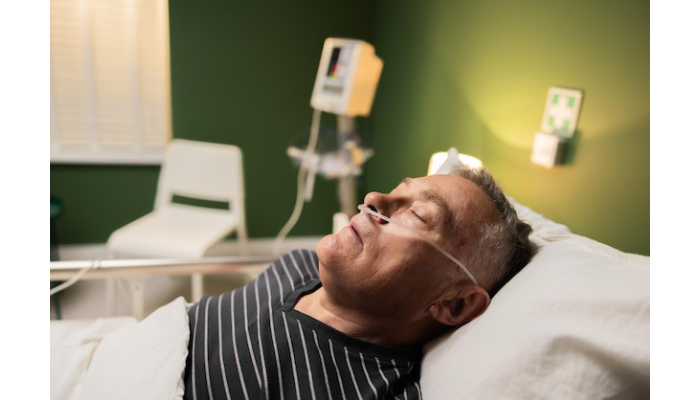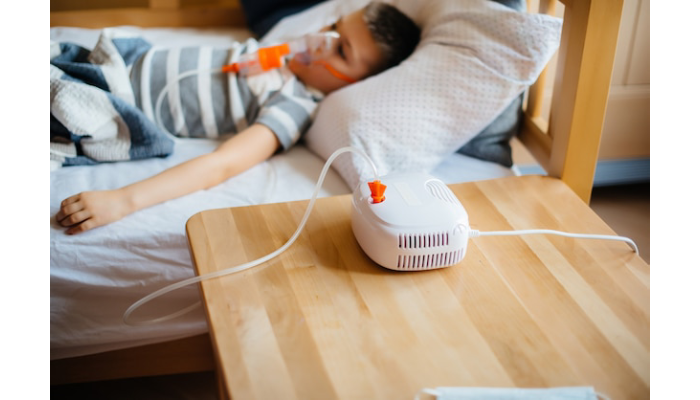
Home Sleep Apnea Test: What Comes Next?
Home sleep apnea tests (HSAT) offer a convenient and comfortable way to diagnose obstructive sleep apnea (OSA), but what comes next is just as important. After taking the test, patients eagerly await the results, which can indicate whether OSA is present. Normal results might not give the full picture, so ongoing symptoms, like loud snoring or daytime fatigue, should prompt further evaluation. If diagnosed with OSA, treatment options like lifestyle changes or CPAP therapy may be discussed. In cases of inconclusive results, an in-lab study may be recommended for a more thorough assessment. Staying proactive about your sleep health can lead to better outcomes!
1. Understanding Home Sleep Apnea Tests
A home sleep apnea test is a user-friendly device that allows you to monitor your sleep patterns right in the comfort of your own bed. This convenient option is designed to be less intrusive than traditional lab tests, making it a popular choice for many patients. During the test, you’ll wear a few simple sensors: a small device on your finger to track your blood oxygen levels, along with straps around your chest or abdomen to measure airflow and breathing efforts.
These tests are typically recommended for individuals who show signs of sleep apnea, such as loud snoring or feeling excessively tired during the day. By focusing on critical indicators like airflow, oxygen levels, and respiratory effort, home sleep tests effectively identify obstructive sleep apnea (OSA) and can provide valuable insights into your sleep health.
Before the test, it’s essential to get clear instructions on setting up and using the equipment properly, as incorrect usage can lead to inaccurate results. It’s also a good idea to keep a sleep diary leading up to the test, jotting down your sleep patterns and any symptoms you experience. This information can help your healthcare provider better understand your situation.
Once the test is complete, a sleep specialist will interpret the data and share the findings with you. Home sleep tests can serve as a crucial first step in addressing sleep issues, leading to appropriate diagnoses and treatment options tailored to your needs.

2. What Happens After the Test
After undergoing a home sleep apnea test, patients can expect to receive their results within about a week. This timely feedback is crucial as it will indicate whether sleep apnea has been detected. Healthcare providers will reach out to discuss these findings in detail, helping patients understand what the results mean for their overall health.
In cases where results are normal, but patients continue to experience symptoms like excessive daytime sleepiness or snoring, further investigation may be warranted. This could involve discussions about alternative sleep disorders that may be at play. On the other hand, if the results reveal abnormal findings, physicians will present various treatment options. These might include lifestyle modifications, such as weight management and changes in sleep position, or medical interventions like CPAP therapy.
It’s important for patients to actively engage during this discussion, asking questions to clarify any uncertainties about their findings. Monitoring ongoing symptoms is also essential; patients should report any changes to their healthcare provider after receiving their results. Typically, a follow-up appointment is recommended to outline the next steps and finalize a treatment plan. In some instances, additional tests may be necessary to confirm a diagnosis, especially if mild forms of apnea are suspected. Overall, understanding the implications of test results is vital for effective management and improvement of sleep health.
3. Possible Outcomes of Home Sleep Tests
Normal test results can bring a sense of relief, yet it’s essential to stay alert for any lingering symptoms that may suggest other sleep problems. Conversely, abnormal results often confirm obstructive sleep apnea, which sets the stage for a structured treatment plan aimed at managing this condition effectively. In cases where results are inconclusive, further evaluation might be required, potentially leading to an in-lab polysomnography for a more comprehensive assessment. Patients might receive varying diagnoses regarding the severity of their sleep apnea, which will significantly influence subsequent treatment decisions.
When a diagnosis is made, healthcare providers will discuss both immediate and long-term management strategies to improve the patient’s quality of life. It’s crucial for patients to understand the possibility of missed diagnoses; they should remain vigilant about the signs of other sleep disorders. The outcomes of these tests can greatly impact one’s overall well-being, making prompt and appropriate follow-up essential. Consulting with sleep specialists can provide personalized treatment options tailored to each individual’s unique situation. For some patients, lifestyle adjustments, such as weight loss or changes in sleep position, can lead to remarkable improvements in symptoms, even without the use of CPAP therapy. Regular monitoring and follow-ups are key to adjusting treatment plans according to the effectiveness of initial strategies.
4. Benefits of Home Sleep Apnea Tests
Home sleep apnea tests offer a comfortable alternative to traditional sleep studies, allowing individuals to rest in their own beds. This familiar environment can lead to more natural sleep patterns, making the results more reliable. Plus, they are typically quicker to access than in-lab studies, which means patients can receive a diagnosis and begin treatment sooner.
Cost-effectiveness is another significant advantage; home tests are generally more affordable than their in-lab counterparts. This affordability opens the door for more patients to get the help they need without the financial burden. Additionally, avoiding the clinical setting reduces stress, which can sometimes hinder sleep quality during testing.
Home tests are also less time-consuming, requiring just one night of monitoring compared to multiple nights in a sleep lab. This straightforward approach allows for easy screening of sleep apnea without extensive preparations or the hassle of travel.
Moreover, these tests encourage better patient engagement. Individuals are more likely to participate in a test they can conduct at home, and when results come in, they can have immediate discussions with healthcare providers about necessary health and lifestyle changes.
The ease of use can help destigmatize sleep-related issues, encouraging more people to seek assistance. Lastly, patients often receive their results faster, which helps expedite the journey towards effective treatment and relief.
5. Limitations of Home Sleep Apnea Tests
Home sleep apnea tests (HSAT) have their limitations, which can impact diagnosis and treatment. One major issue is that these tests may not capture the full complexities of sleep disorders. For instance, they often miss conditions like central sleep apnea or complex cases of obstructive sleep apnea (OSA), which require more comprehensive evaluation. Technical problems can also arise during the test, such as sensor misplacement or equipment malfunction, leading to inaccurate results. Additionally, HSATs do not assess sleep architecture or brain activity, which are crucial for diagnosing other sleep disorders that might be present.
The design of home tests is tailored to specific symptoms, meaning that patients with atypical presentations might not receive an accurate diagnosis. Furthermore, individuals with comorbid conditions, like obesity or heart disease, may require more thorough testing to fully understand their health profile. The interpretation of the results can be influenced by factors such as age, weight, and overall health status, making accurate diagnosis more complicated.
Not everyone is suited for home testing; those with certain medical issues may still need in-lab assessments for a complete analysis. The quality of the equipment used can vary significantly, which can impact the reliability of the results. Moreover, if patients are not adequately educated on how to use the testing equipment, errors can occur, emphasizing the need for thorough instructions. Lastly, the regulatory oversight for home sleep tests is not as stringent as it is for in-lab studies, which raises concerns about the consistency and reliability of the results.
6. Next Steps After the Test
If your home sleep apnea test results come back normal but you still experience symptoms like loud snoring or excessive daytime fatigue, don’t hesitate to reach out to your healthcare provider. It’s essential to discuss your ongoing issues so they can help you explore further evaluations if needed. Keeping a detailed record of your symptoms can also provide valuable insights during follow-ups, helping your provider understand your situation better.
Consider making lifestyle changes that can greatly improve your sleep quality. For example, if you’re overweight, even modest weight loss can help reduce sleep apnea symptoms. Practicing good sleep hygiene, such as maintaining a consistent bedtime and creating a restful sleep environment, can also make a difference. Additionally, avoiding alcohol and sedatives before bedtime can help you achieve a more restful night’s sleep.
Regular follow-ups are vital to monitor your symptoms and adjust your treatment plan as necessary. Remember that factors like stress, medications, and overall health can affect your sleep quality, so staying in touch with your doctor is crucial. If you do receive a sleep apnea diagnosis, adherence to prescribed treatments, like using a CPAP machine, is key to its effectiveness.
It’s also wise to schedule your follow-up appointments promptly after receiving your test results. This ensures you’re taking the right steps towards better health without unnecessary delays. Your healthcare provider may recommend periodic retesting to assess how well your treatments or lifestyle changes are working.
Finally, educating yourself about sleep health can empower you to make informed decisions about your sleep habits. Joining support groups or connecting with others who face similar challenges can provide encouragement and additional resources to help you on your journey to better sleep.
- If symptoms persist despite normal test results, patients should communicate with their healthcare provider to explore further evaluation.
- Patients may need to keep a record of their symptoms post-test to provide valuable information during follow-ups.
- Introducing lifestyle changes, such as weight loss, improved sleep hygiene, and avoiding alcohol, can be beneficial.
- Regular follow-ups are essential to monitor symptoms and adjust treatment plans as needed.
- Patients should be aware of how factors like stress, medication, and overall health can impact their sleep quality.
- If diagnosed with sleep apnea, adherence to prescribed treatments, such as CPAP therapy, is crucial for effectiveness.
- Patients should schedule appointments promptly after receiving test results to ensure they are taking appropriate actions for their health.
- Healthcare providers may recommend periodic retesting to assess the effectiveness of ongoing treatments or lifestyle changes.
- Education on sleep health can empower patients to make informed decisions about their sleep behavior and overall well-being.
- Joining support groups or connecting with others facing similar challenges can provide encouragement and additional resources.
7. Regular Follow-Up and Monitoring
Regular follow-up appointments are vital in assessing how well treatments for sleep apnea are working and making necessary adjustments. Patients should feel empowered to discuss any new or worsening symptoms during these visits. For instance, if someone notices increased daytime fatigue or unusual sleep patterns, bringing these up with their healthcare provider can lead to timely interventions.
Monitoring factors like weight changes, medication adjustments, and lifestyle modifications can significantly influence sleep quality and treatment effectiveness. Keeping a sleep diary is a fantastic way for patients to track their sleep patterns, symptoms, and the effects of treatments, providing invaluable information for healthcare providers.
For those who may find it challenging to travel for appointments, telemedicine options are increasingly available, offering convenient alternatives for follow-ups. These virtual visits allow patients to engage with their healthcare team, review adherence to prescribed treatments, and receive support without the need to leave home.
Regular assessments can also help in identifying any emerging sleep disorders that may require attention, ensuring that patients receive comprehensive care. During follow-ups, patients should not hesitate to ask questions or seek clarity about their treatment plans, reinforcing their role in managing their health.
The frequency of follow-ups can vary based on individual health needs; some patients may require more frequent checks than others. Ultimately, continual monitoring builds a comprehensive understanding of a patient’s sleep health over time, making it a crucial component of effective treatment.
Frequently Asked Questions
What happens after I take a home sleep apnea test?
Once you finish the home sleep apnea test, you’ll return the equipment to the provider. Then, a doctor will review your results, which typically takes a few days.
How do I know if I have sleep apnea after the test?
You’ll receive a report based on your test results. If the data shows patterns of interrupted breathing during sleep, it may indicate sleep apnea.
What kind of treatment options are available if I have sleep apnea?
If diagnosed with sleep apnea, treatment options may include lifestyle changes, using a CPAP machine, or other devices. In some cases, surgery might be recommended.
Can I use the results from my home test for insurance purposes?
Yes, the results of your home sleep apnea test can often be used to support insurance claims, especially if a doctor’s diagnosis is involved.
What if I get inconclusive results from my home sleep apnea test?
If your results are inconclusive, the doctor may suggest a follow-up test or a sleep study in a lab to get more information.
TL;DR Home sleep apnea tests (HSAT) offer a convenient way to diagnose obstructive sleep apnea from home. After the test, the results help determine the presence of OSA, with next steps varying based on findings. Patients may face normal, abnormal, or inconclusive results, which can lead to additional evaluations or treatments. While HSATs provide benefits like accessibility and cost-effectiveness, they also have limitations in accuracy. If symptoms persist after testing, further consultations with healthcare providers are crucial for tailored follow-up care and interventions.



